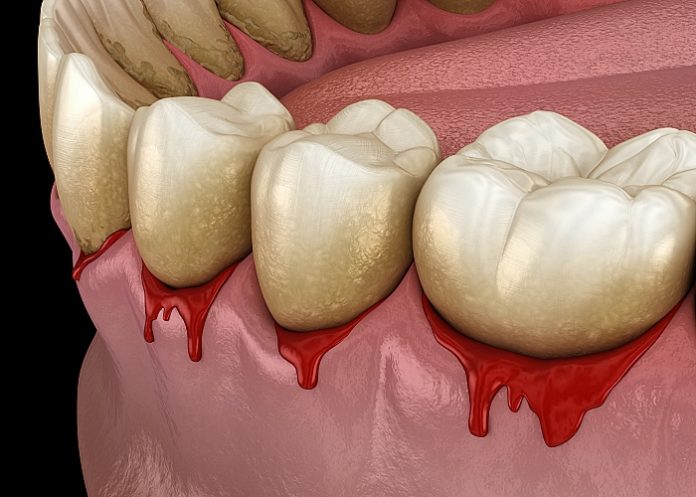Beyond brushing with a basic toothbrush, only a handful of self-administered interventions provide additional protection against gingivitis and periodontitis, found a research review into the effectiveness of various oral hygiene devices, published in the Journal of the International Academy of Periodontology.
Research led by the University at Buffalo set out to separate fact from fiction in determining which oral hygiene tools actually prevent gum disease. The result? Only a handful of self-administered interventions provide additional protection against gingivitis and periodontitis beyond brushing with a basic toothbrush.
At the moment, all other oral hygiene interventions are supported by insufficient evidence, says Dr Frank Scannapieco, principal investigator and chair and professor of oral biology in the University at Buffalo School (UB) of Dental Medicine. The findings, he says, will help dental practitioners and the public identify best practices for preventing gum disease, which affects nearly half of adults 30 and older in the US, according to the Centers for Disease Control and Prevention (CDC).
“Patients can be confident that the oral care tools and practices supported by research, as described in the paper, will prevent the initiation and progression of periodontal disease, if they are performed regularly and properly,” he says.
Additional investigators included Dr Eva Volman, first author, UB alumna and resident dentist at the Eastman Institute for Oral Health; and Elizabeth Stellrecht, interim head of health sciences library services at UB.
The proven: basic toothbrush; interdental brush; water pick; chlorhexidine gluconate (CHX), cetylpyridinium chloride (CPC) and essential oil (Listerine) mouth rinses
Toothbrushing is the cornerstone of daily oral hygiene and is a reliable way to control dental plaque, says Scannapieco. And according to the research, interdental brushes and water picks performed better than other interdental oral hygiene devices at reducing gingivitis, and both should be used in combination with daily tooth brushing to prevent gum disease.
Among the numerous mouth rinses examined, those based on CHX, CPC, and essential oils (such as Listerine) were proven to be effective at significantly reducing plaque and gingivitis.
While not effective at fighting gingivitis, toothpicks were useful for monitoring gum health, says Scannapieco. By gently prodding the gums with a toothpick and monitoring for bleeding, patients could detect signs of gum disease.
The bad: Triclosan toothpastes and mouth rinses significantly reduced plaque and gingivitis, however, the compound is linked to the development of various types of cancers and reproductive defects. Triclosan has been removed from most popular toothpastes in the US.
The unproven: powered toothbrushes, dental floss, probiotics, dietary supplements and numerous mouth rinses
Electric-powered toothbrushes are no more effective at reducing plaque and gingivitis than a basic toothbrush, found the researchers. And little evidence has been published in support of dental floss, the mainstay of interdental cleaning, to reduce plaque and gingivitis. But don’t toss your floss just yet, says Scannapieco, as flossing is beneficial.
“While there are few studies available that specifically examined toothbrushes or floss alone, both are still essential. Floss is especially useful to remove interdental plaque for people who have tight space between their teeth. Floss also probably reduces the risk for cavities that from between the teeth.”
The investigators found insufficient evidence that mouthwashes based on tea tree oil, green tea, anti-inflammatory agents, hydrogen peroxide, sodium benzoate, stannous fluoride, hexetidine or delmopinol reduced gingivitis.
The use of probiotics, although promising as a preventive strategy against gum disease, is unproven. The researchers found little evidence that supports the claim that dietary supplements improve gum health. The investigators also found insufficient evidence that professional plaque removal (known as scaling, the process of removing plaque with a scraper) prevents gum disease.
Study details
Proven Primary Prevention Strategies for Plaque-Induced Periodontal Disease – An Umbrella Review
Eva I. Volman, Elizabeth Stellrecht and Frank A. Scannapieco
Published in Journal of the International Academy of Periodontology, October 2021 Vol 23 Issue 4
Abstract
Aim: The aim of this umbrella review was to provide a summary of the findings based on the highest level of evidence from published systematic reviews to identify proven, self-administered interventions to prevent periodontal disease.
Methods: A search for systematic reviews and meta-analyses was conducted using the following search terms: systematic review, periodontal disease, periodontitis, gingivitis, and primary prevention. Outcomes included indices for dental plaque (oral biofilm), gingival inflammation, gingival bleeding, and probing pocket depth.
Results: No systematic reviews were found that evaluated the effectiveness of toothbrushing for daily oral hygiene.
Methods of mechanical oral biofilm control found to be effective when compared to toothbrushing alone included powered toothbrushes, oral irrigators, and interdental cleaning devices (triangular woodsticks and interdental brushes). Manual tooth brushing and powered tooth brushing were found to be equivalent. Effective topical chemical interventions include chlorhexidine gluconate (CHX), cetylpyridinium chloride (CPC), and essential oils. Other interventions, including sodium benzoate (PLAX), stannous fluoride, hexetidine, hydrogen peroxide, other natural compounds, 0.2% delmopinol, probiotics, anti-inflammatory agents, dietary supplements, anti-oxidants, and smoking cessation are supported only by limited evidence.
Triclosancontaining dentifrice adds to the effectiveness of toothbrushing to reduce gingivitis.
Conclusion: Relatively few interventions have been proven to prevent gingivitis and periodontitis.
See more from MedicalBrief archives:
Cavity-prevention approach effectively reduces decay
Oral hygiene linked to lower risk AF and heart failure
Link between poor oral health and hepatobiliary cancer
Prostatitis reduced with gum disease tx

